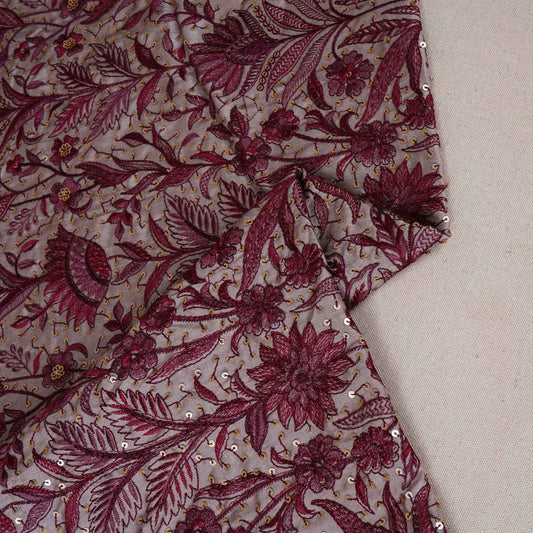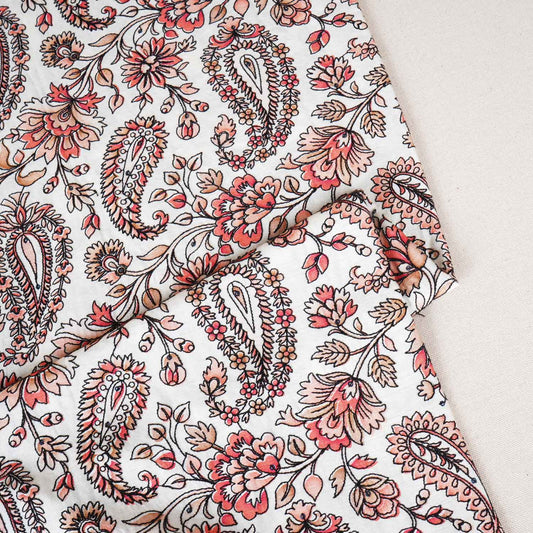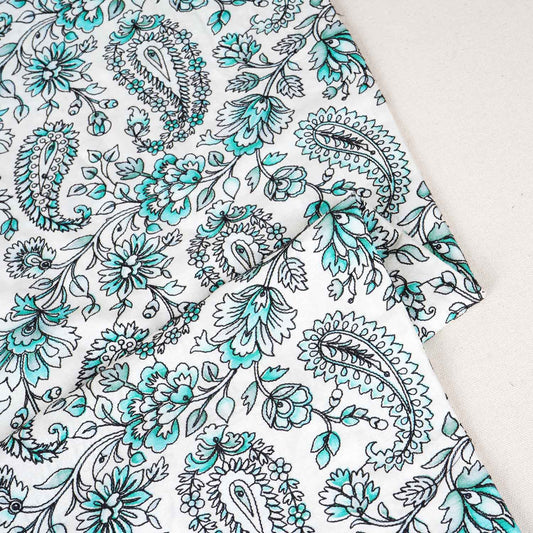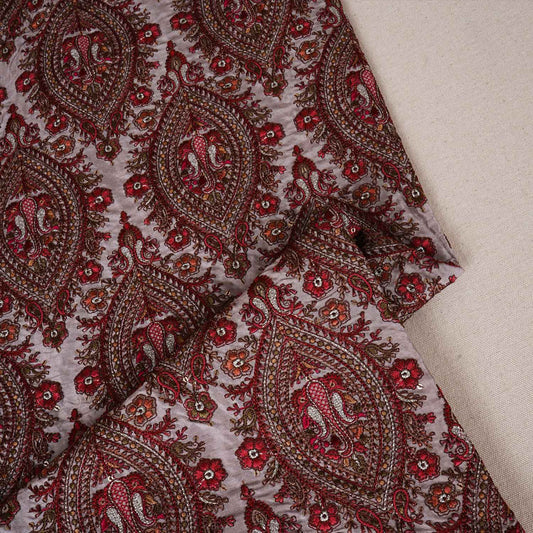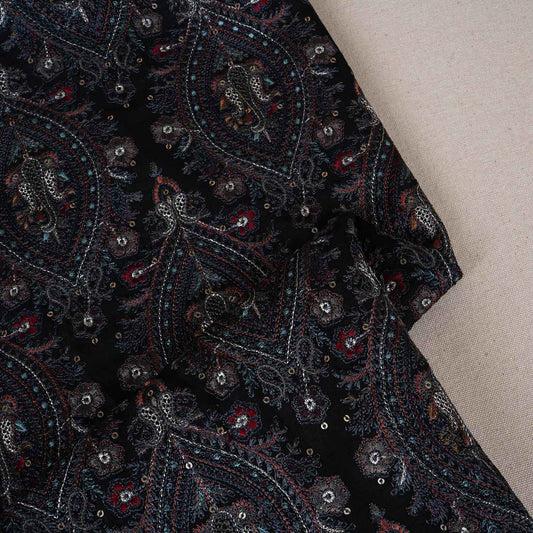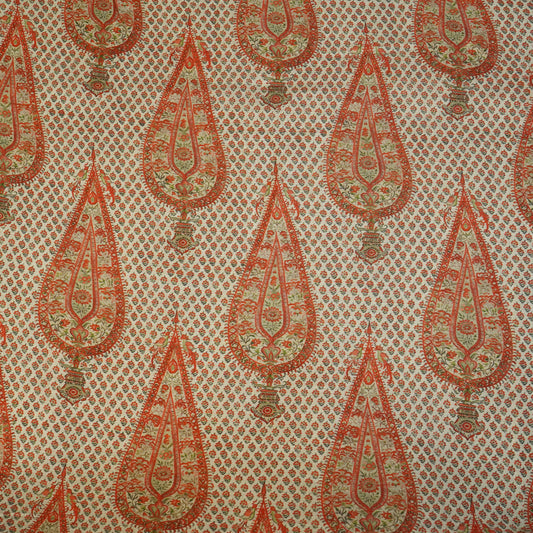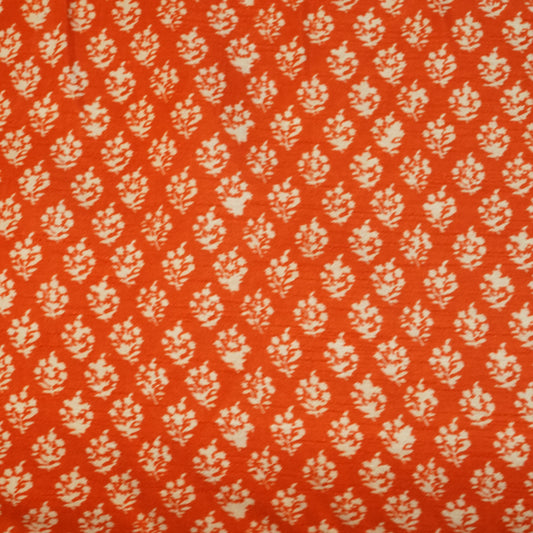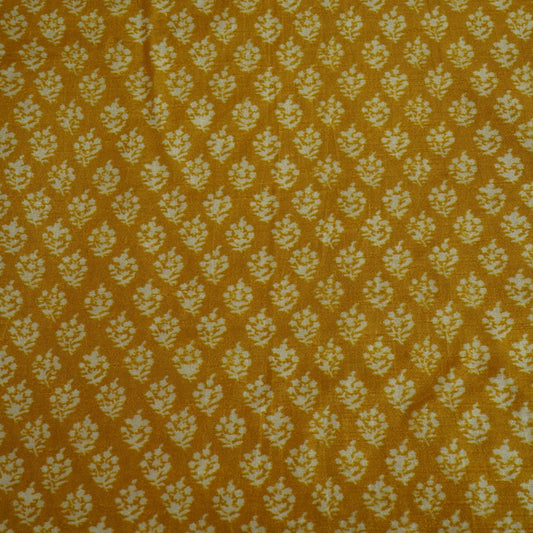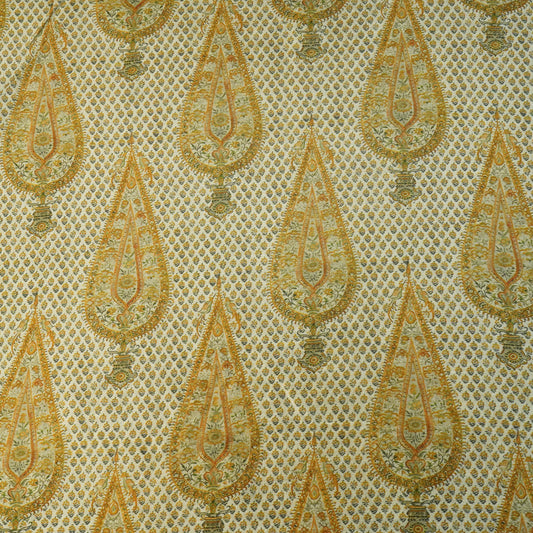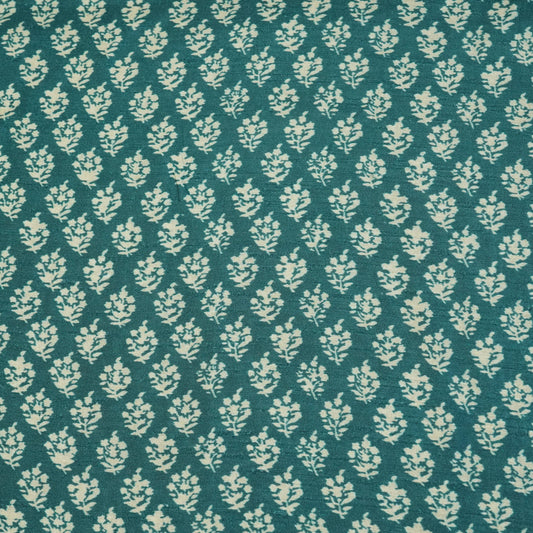The raw silk fabric industry utilises various types of natural silk fibres to create luxurious fabrics. Some common types of raw silk include mulberry silk, tussar silk, and moonga silk.
- Mulberry silk comes from the Bombyx mori silkworm and is the most popular type of silk. It has a smooth, refined texture and is used to make high-quality products like sarees, dresses, ties, and scarves.
- Tussar silk has a coarse, irregular texture and is commonly used in tussar silk sarees that are lightweight and have a rustic beauty.
- Moonga silk is brownish-golden and is often blended with other fibres like cotton to make moonga silk fabrics ideal for summer clothing like dresses and tunics.
Other uses of raw silk depend on the unique characteristics of each fibre. Silk's natural sheen, softness, strength, and absorbency lend themselves to clothing items like blouses, linings, robes, undergarments, upholstery, and bedding. The elegance and versatility of raw silk make it a much sought-after textile across the globe.
Brief Overview of the Raw Silk Fabric Industry
The raw silk fabric industry revolves around the harvesting and manufacturing of natural silk fibres into various textile products. Silk is derived from the cocoons of silkworms and is valued for its softness, sheen, and durability.
The industry focuses on cultivating silk-producing insects, extracting and spinning silk threads, dying, weaving/knitting silk fabrics, and designing products like sarees, gowns, ties, upholstery or bedding items using fine silk textiles for consumers across the globe.
Raw silk refers to the natural fibres harvested from silkworm cocoons that have not been through the complete silk manufacturing process. There are several types of raw silk, with regular mulberry silk and tussar silk being two of the most prominent.
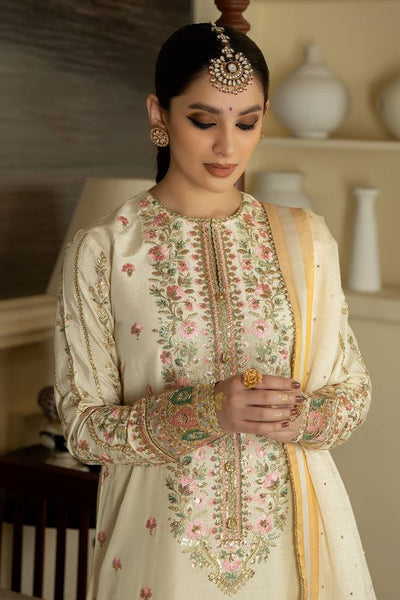
Exploring Types of Raw Silk
Raw silk refers to the natural fibres harvested from silkworm cocoons that have not been through the complete silk manufacturing process. There are several types of raw silk, with regular mulberry silk and tussar silk being two of the most prominent.
Regular Mulberry Silk
Mulberry silk comes from the silkworm Bombyx mori, which feeds on the leaves of mulberry trees. Mulberry silk, known as the softest and finest of all silk types, is characterised by its smooth, refined texture. It's highly valued for its beautiful drapes. It has a natural creamy ivory or white colour and takes dye exceptionally well.
This versatile silk is used to create various apparel like gowns, dresses, blouses, scarves, accessories and home furnishings. The durability and absorbency of mulberry silk also lend itself well to bedding items like luxurious sheets and pillowcases. From haute couture to everyday comforts, regular mulberry silk is undoubtedly the most popular raw silk type.
Tussar Silk
- Tussar silk is produced by the Antheraea mylitta silkworm that feeds on trees like oak and juniper.
- It has a coarse, uneven texture compared to mulberry silk.
- Tussar silk fabrics like tussar silk sarees showcase a subtle irregular slubbed effect that lends a unique rustic beauty.
- The golden brown colour of tussar silk limits dyeing options but complements its natural raw essence.
- It is less expensive than mulberry silk and ideal for warm-weather clothing that requires minimal care - an eco-friendly biodegradable fabric in high demand for contemporary casual as well as ethnic garments.
With various kinds of raw silk emanating from different regions and silkworm species, this incredible natural fabric offers diversity in appearance, quality and application across the luxury textile industry.
The Versatility of Raw Silk
Raw silk is an incredibly versatile fabric used in a vast array of items. Its soft sheen lends elegance to clothing like dresses, robes, and nightwear. Silk's strength makes it suitable for heavier garments like jackets and pants. It is also perfect for accessories like scarves, ties, purses, and hats. Raw silk upholstery, bedding, and other home furnishings also allow consumers to add a touch of luxury to their living spaces. This diversity in potential uses makes raw silk one of the most coveted fabrics globally.
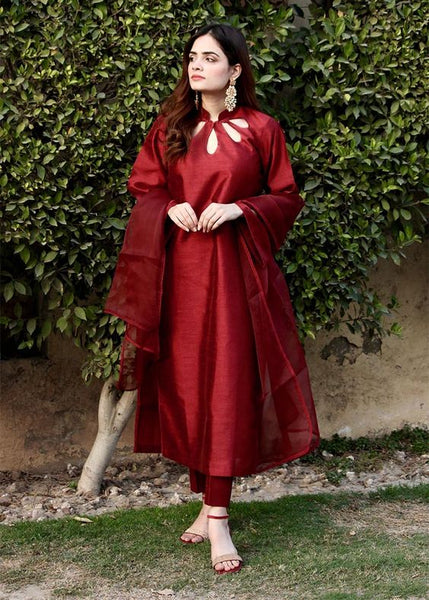
Sustainability and Raw Silk
Sericulture, producing raw silk, enables income generation in remote rural areas. The practice also promotes sustainable models like forest-based tussar silk production, which provides a profitable livelihood while ensuring ecological balance. Efforts to enhance effective silk waste management also make the industry ecologically relevant. With current innovations focused on environmental welfare, raw silk continues to integrate sustainable and ethical practices.
Frequently Asked Questions
1. What are the key characteristics of Tussar silk?
Ans: Tussar silk has a coarse, uneven texture, absorbing dye well for rich colours. Its non-constricting weave provides comfort, which is ideal for warm climates. Tussar is created without harming silkworms.
2. What are the traditional uses of Muga silk?
Ans: Prized for its natural golden hue and durability, Muga silk remains important in Assamese culture for traditional garments like mekhela chadars and sarees.
3. Is raw silk considered an eco-friendly choice?
Ans: Yes, raw silk is very sustainable. As a natural protein fibre, it degrades without microplastic pollution. Its production has a low environmental impact, using no chemical processing or dyes.
4. Can silk be blended with other materials, and what are the advantages of such blends?
Ans: Silk blends well with sustainable fabrics like organic cotton, linen and hemp for improved drape, sheen or shape retention compared to those fibres alone.
5. How does the sustainability of different silk types vary?
Ans: Tussar silk is extremely eco-friendly, given that insects are unharmed in production. Muga's traditions limit waste. Mulberry raising can impact water use, so responsible certified production matters.
 Call Us
Call Us



